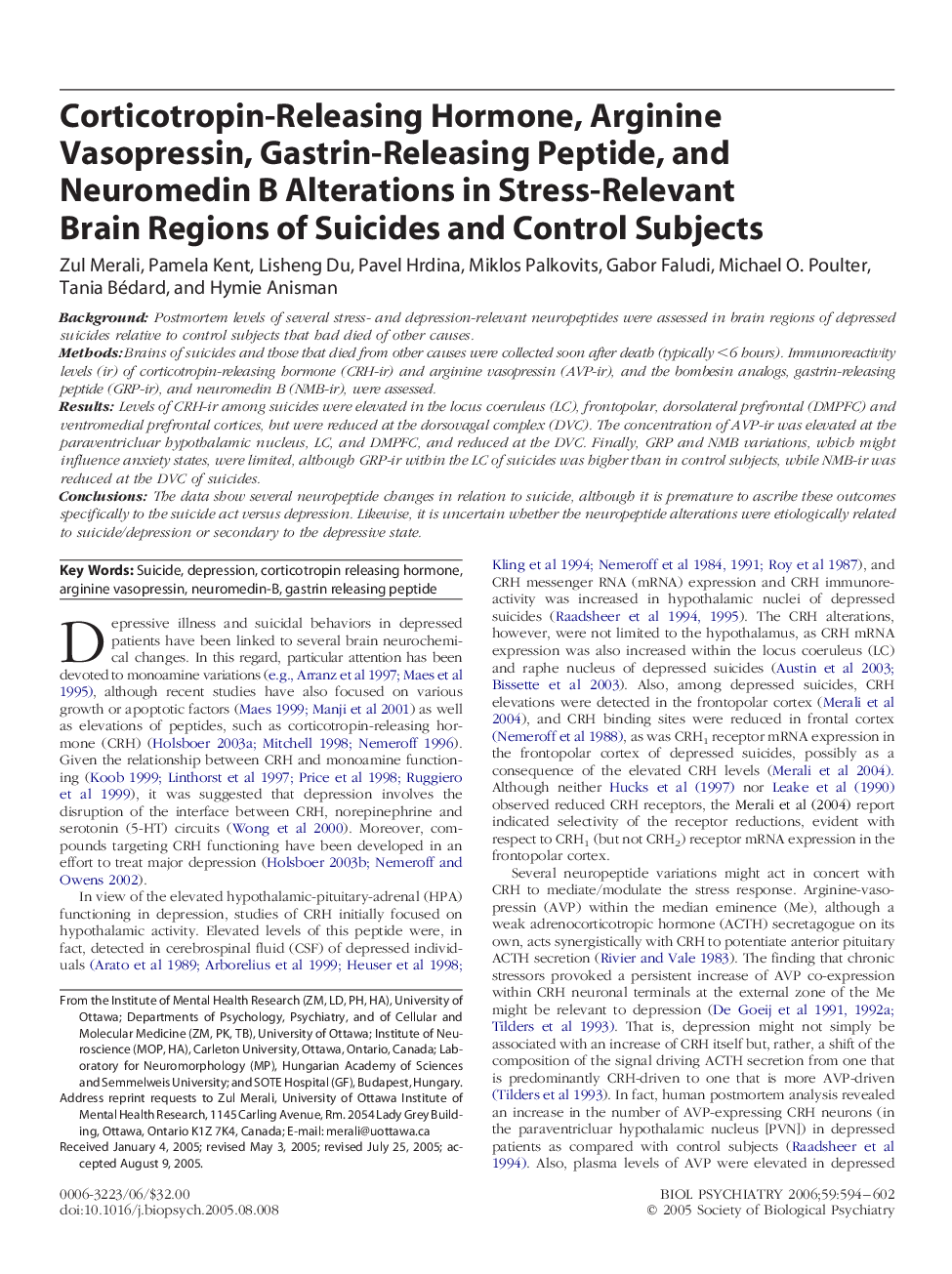| Article ID | Journal | Published Year | Pages | File Type |
|---|---|---|---|---|
| 4181268 | Biological Psychiatry | 2006 | 9 Pages |
BackgroundPostmortem levels of several stress- and depression-relevant neuropeptides were assessed in brain regions of depressed suicides relative to control subjects that had died of other causes.MethodsBrains of suicides and those that died from other causes were collected soon after death (typically <6 hours). Immunoreactivity levels (ir) of corticotropin-releasing hormone (CRH-ir) and arginine vasopressin (AVP-ir), and the bombesin analogs, gastrin-releasing peptide (GRP-ir), and neuromedin B (NMB-ir), were assessed.ResultsLevels of CRH-ir among suicides were elevated in the locus coeruleus (LC), frontopolar, dorsolateral prefrontal (DMPFC) and ventromedial prefrontal cortices, but were reduced at the dorsovagal complex (DVC). The concentration of AVP-ir was elevated at the paraventricluar hypothalamic nucleus, LC, and DMPFC, and reduced at the DVC. Finally, GRP and NMB variations, which might influence anxiety states, were limited, although GRP-ir within the LC of suicides was higher than in control subjects, while NMB-ir was reduced at the DVC of suicides.ConclusionsThe data show several neuropeptide changes in relation to suicide, although it is premature to ascribe these outcomes specifically to the suicide act versus depression. Likewise, it is uncertain whether the neuropeptide alterations were etiologically related to suicide/depression or secondary to the depressive state.
